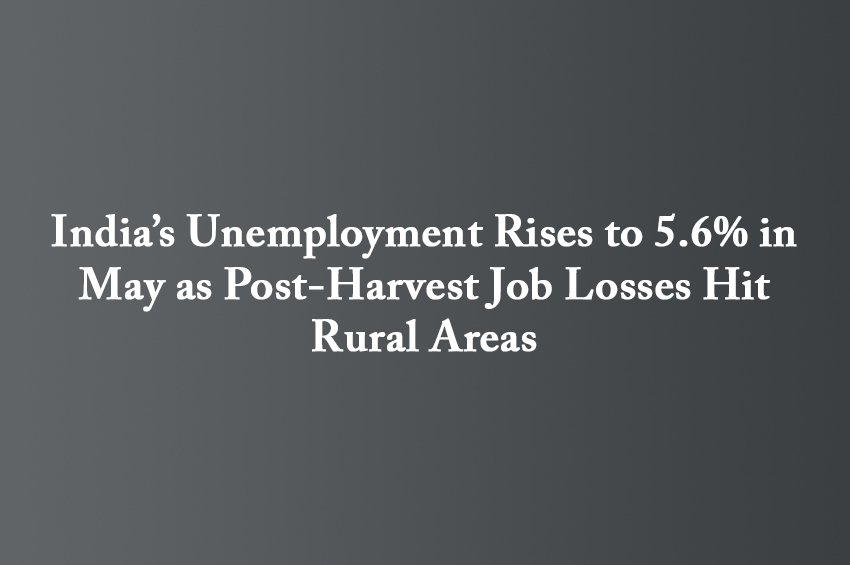Winning Bizness Desk
Mumbai. In May 2025, India’s unemployment rate went up to 5.6%, rising from 5.1% in April, according to the monthly Periodic Labour Force Survey (PLFS) by the government. This monthly data helps track employment trends more closely than earlier quarterly or yearly reports.
Women More Affected
The survey shows that unemployment is slightly higher among women (5.8%) compared to men (5.6%) . In rural areas, fewer women are working or looking for jobs—only about 36.9% participate in the workforce, down from April’s figure.
Youth Unemployment Worsens
Young people (aged 15–29) faced more joblessness. Their unemployment rate increased from 13.8% in April to 15.0% in May. In rural areas, it rose to 13.7%, and in urban areas, to 17.9%..
Rural Jobs Shrinking After Harvest
The end of the Rabi harvest season led to a decline in farm work. Employment in agriculture dropped from 45.9% in April to 43.5% in May. Many rural workers moved to factory and service jobs—or temporarily left the workforce altogether.
Fewer People in the Workforce
The percentage of people working or looking for work (Labour Force Participation Rate) fell from 55.6% in April to 54.8% in May. Rural participation dropped to 56.9%, and urban areas recorded 50.4%. The share of people actually working (Worker Population Ratio) also decreased, from 52.8% to 51.7%.
Seasonal and Weather Reasons
Government officials point out that these monthly changes are mostly seasonal, because of the harvest cycle, and partly due to hot summer weather, which reduces outdoor work. For example, in higher-income rural households, women often stop working after the harvest and switch to household activities.
In cities, changes were smaller. There was a slight drop in self-employment and casual jobs, and unemployment edged up a bit—but without major shifts
Seven Key Points
1. Overall unemployment rose from 5.1% in April to 5.6% in May.
2. Women are hit harder, with an unemployment rate of 5.8% versus 5.6% for men.
3. Youth unemployment climbed to 15%, affecting both rural (13.7%) and urban (17.9%) areas.
4. Rural jobs declined after the Rabi harvest, with farm work shrinking.
5. Labor force participation fell, with fewer people working or seeking work in both rural (56.9%) and urban (50.4%) settings.
6. Seasonal harvest cycles and hot weather largely explain the temporary rise in joblessness.
7. Urban job market showed only small changes, with slight increases in unemployment and small drops in casual and self-employed roles.


